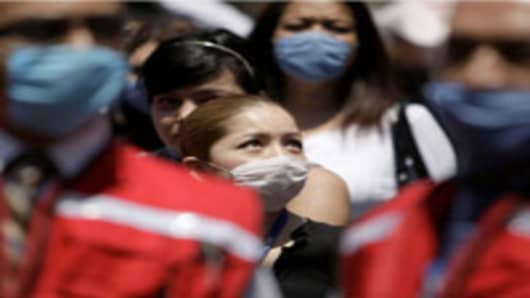If a third of people wind up catching swine flu, 15 states could run out of hospital beds around the time the outbreak peaks, a new report warns Thursday.
The nonprofit Trust for America's Health estimates the number of people hospitalized could range from a high of 168,000 in California to just under 2,500 in Wyoming.
The public health advocacy group used government flu computer models to study how quickly hospitals would fill up during a mild pandemic, like the kind the swine flu -- what doctors prefer to call the 2009 H1N1 strain -- is shaping up to be.
It based its estimates on the mild 1968 pandemic, suggesting up to 35 percent of the population could fall ill.
Even though only a fraction would be sick enough to be hospitalized, health officials are bracing: When H1N1 first appeared in the spring, more than 44,000 people visited emergency rooms in hard-hit New York City, the report noted. Just sorting out which patients are sick enough to be admitted from the vast majority who need to go home is a big job. And hospital capacity varies widely.
By the outbreak's peak, the new report suggests Delaware and Connecticut hospitals would fill up soonest. Also on that list: Arizona, California, Hawaii, Maryland, Massachusetts, Nevada, New Jersey, New York, Oregon, Rhode Island, Vermont, Virginia and Washington.
To deal with overcrowding from emergencies, hospitals are supposed to have "surge" plans -- when they would postpone elective surgeries to free up beds, for instance, and when they might even need to call in government help for mobile hospital units.
Those are among the options in New Jersey hospitals' surge plans, as well as doubling-up single rooms and even using nursing-home beds as necessary, says the state health department, which deems its hospitals ready to meet the challenge.


